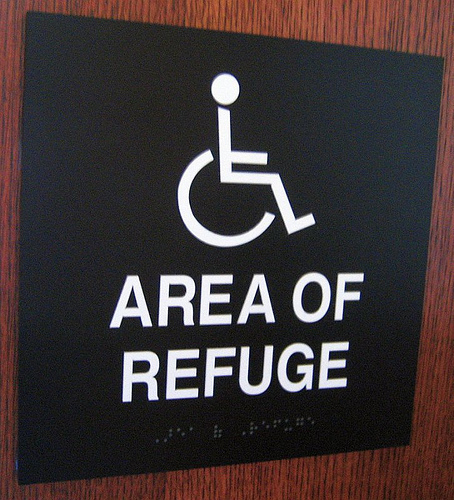 One of the things you might be hearing when it comes to the Americans with Disabilities Act is building compliance. We are gradually reaching a point when the needs of everyone are being taken into account. People are becoming more aware, through education, as well as exposure to the needs of those who are dependent on something that is so basic and simple.
One of the things you might be hearing when it comes to the Americans with Disabilities Act is building compliance. We are gradually reaching a point when the needs of everyone are being taken into account. People are becoming more aware, through education, as well as exposure to the needs of those who are dependent on something that is so basic and simple.
When mobility is taken for granted, the usual factors such as accessibility and ease of use are considered, but what about the essentials of public use? How safe is the environment you are trying to access? In case of emergency, where do you go if you are using a wheelchair and the elevators have been stopped? If there is an event such as a tornado or a fire, where can you seek refuge? Where can rescue workers look to find you once things get really severe?
Public buildings are required to establish an area of refuge for just these purposes. These need to be areas that are determined to be structurally sound enough and accessible enough to be places of refuge. They also need to be well-marked so that people in need of these places of refuge know where to access them in case of an emergency.
In the past, safety features of buildings used to be geared more towards those without needs for accommodating wheelchair access, audio, or visual impairment. Now, security and fire systems incorporate several levels of safety, such as flashing lights as well as audible alarms for fire systems. Strobe lights and emergency lighting can allow persons who are deaf or hard of hearing early warning, and audible alarms can safely guide those to safety who are limited to access due to visual restrictions.
These systems are more effective when combined with other elements of safety, such as places of refuge, which allow people with exclusive need and use of elevators to seek shelter in the event of an emergency even when their access to egress is limited by lockdown protocols or even simply the prevention of their access to elevators.
Contact us if you would like to learn more about the protection of your rights under the Americans with Disabilities Act and how concerns of safety systems in places you visit might be affecting you. Because safety of use is something we should all expect to have.
